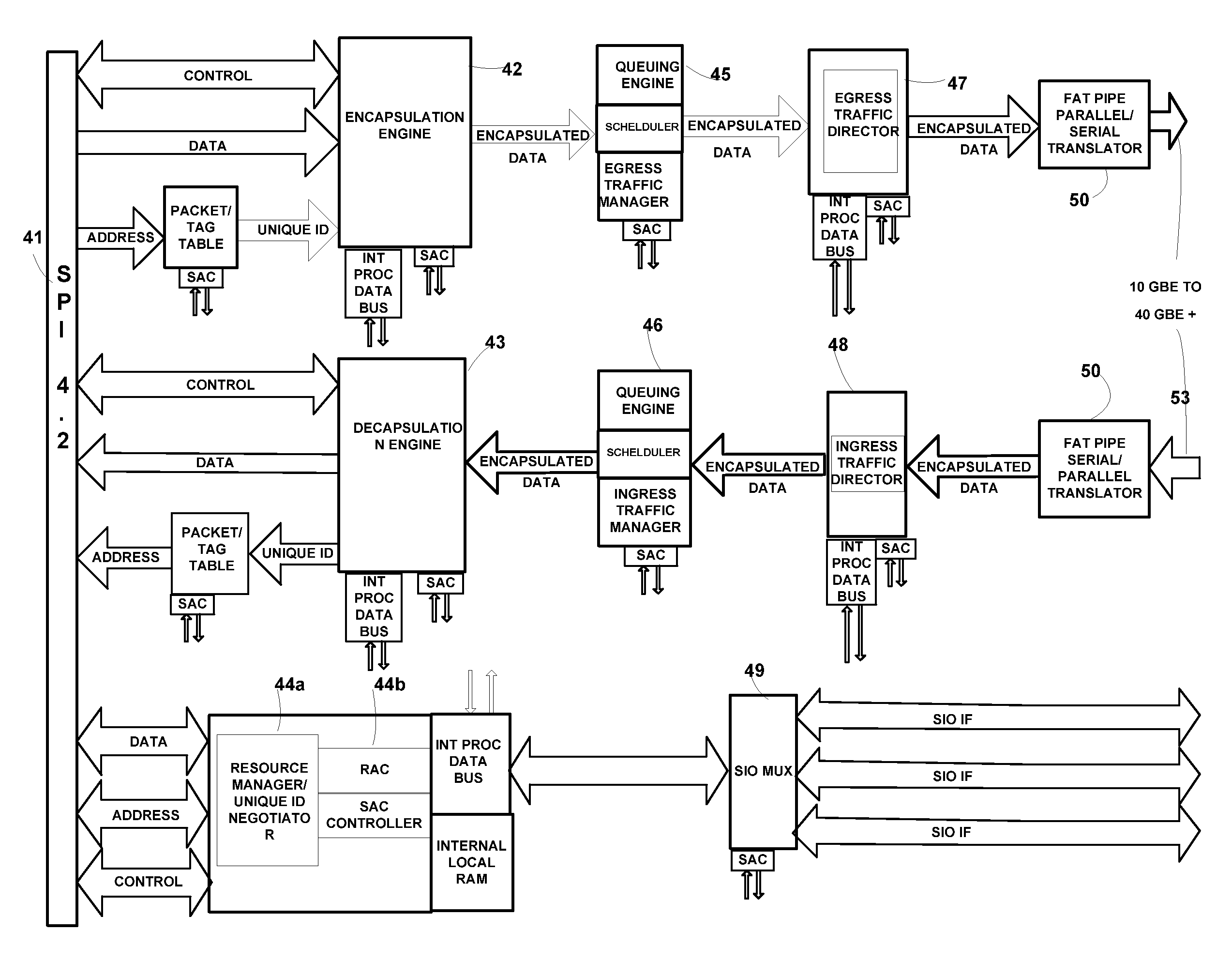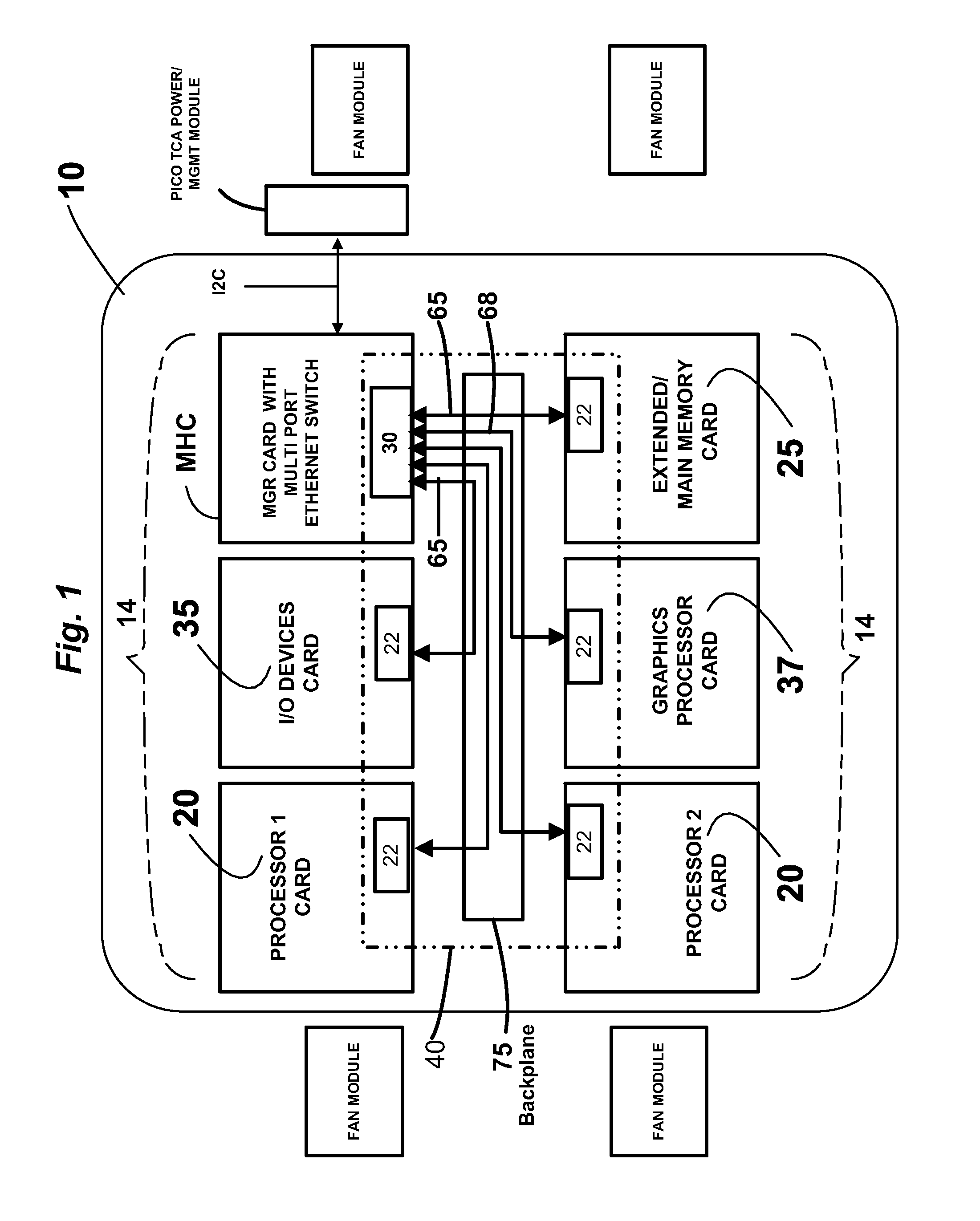Telecommunication and computing platforms with serial packet switched integrated memory access technology
a technology of integrated memory and telecommunications platforms, applied in data switching networks, multiplex communication, instruments, etc., can solve the problems of limiting the total throughput a contemporary cpu can deliver, curtailing the size of memory that can be so coupled, and unable to effectively exploit the capacity without constraining cpu throughput, etc., to achieve efficient packet-based serial self-clocked communication
- Summary
- Abstract
- Description
- Claims
- Application Information
AI Technical Summary
Benefits of technology
Problems solved by technology
Method used
Image
Examples
Embodiment Construction
[0037]FIG. 1 depicts a computer system in accordance with one embodiment of the present invention that is implemented as a multi-card Advanced Mezzanine Card (AMC) computer system based on an advanced TCA packaging arrangement having at least one processor card, and, optionally, a graphics processor card, a I / O devices 35 card and an extended memory card that are all interfaced to a management card having a multi-port Ethernet switch. All of the processor cards and the memory card are connected via a backplane with the multi-port Ethernet switch on the management card as the inter-card Ethernet switched fabric for the computer system via bit stream protocol processor chips located on each card.
[0038]In this embodiment, the computer system is housed in a 3×2 microTCA based packaging arrangement shown in FIG. 3B, with redundant power supplies and shelf management functionality for each 3-wide microTCA shelf that can implement a picoTCA packaging arrangement. In this embodiment, conven...
PUM
 Login to View More
Login to View More Abstract
Description
Claims
Application Information
 Login to View More
Login to View More - R&D
- Intellectual Property
- Life Sciences
- Materials
- Tech Scout
- Unparalleled Data Quality
- Higher Quality Content
- 60% Fewer Hallucinations
Browse by: Latest US Patents, China's latest patents, Technical Efficacy Thesaurus, Application Domain, Technology Topic, Popular Technical Reports.
© 2025 PatSnap. All rights reserved.Legal|Privacy policy|Modern Slavery Act Transparency Statement|Sitemap|About US| Contact US: help@patsnap.com



